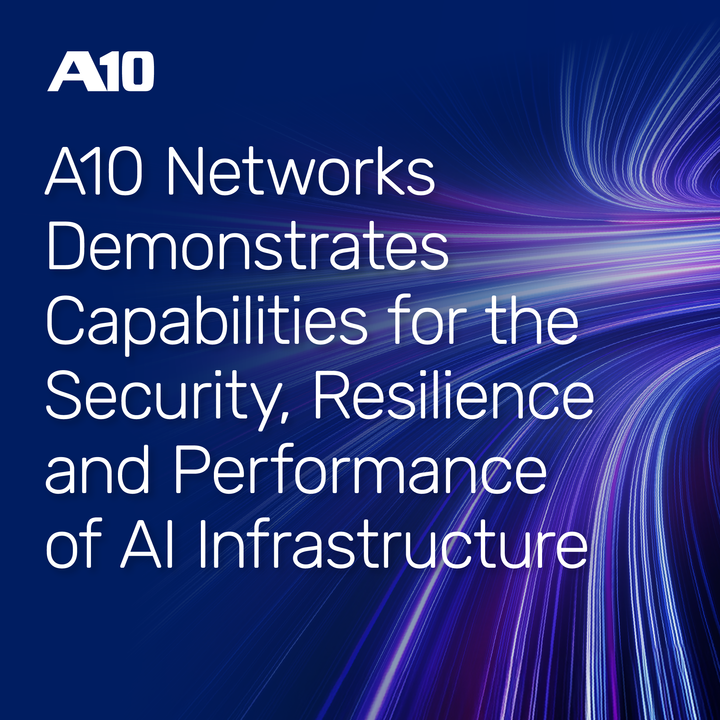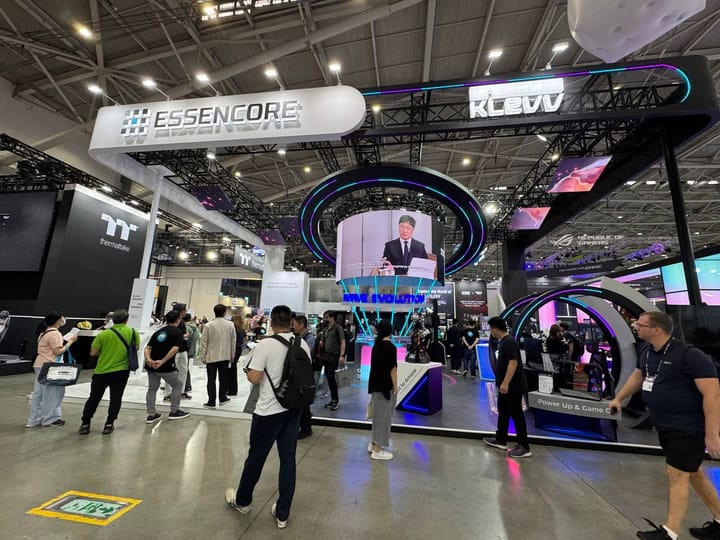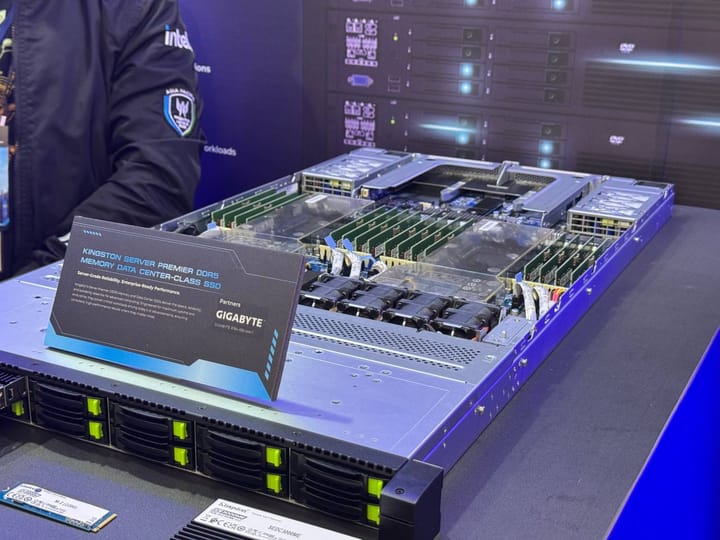Robotics and Simulation: NVIDIA’s Blueprint for the Physical AI Era
NVIDIA is accelerating efforts to bring intelligence into the real world through advanced robotics and simulation infrastructure.

At COMPUTEX 2025, NVIDIA expanded its vision beyond digital agents—into the realm of physical AI. While much of the industry continues to focus on large language models and virtual AI agents, NVIDIA is accelerating efforts to bring intelligence into the real world through advanced robotics and simulation infrastructure.
Key to this vision are two platform pillars: the updated Isaac Robotics Platform and the newly introduced Newton physics engine, both designed to support the development, training, and deployment of physical AI systems—from industrial robots to autonomous machines and general-purpose humanoids.
Simulated Before Deployed: The Need for Virtual Training Grounds
Real-world robotics development has long been limited by one fundamental bottleneck: training physical robots in the real world is costly, time-consuming, and dangerous. Just as AI language models are pre-trained on massive corpora before being fine-tuned for specific tasks, physical AI systems must now follow the same path—trained first in simulation before entering the real world.
This is where Omniverse-based simulation and the Isaac platform come in.
Isaac Platform: A Full-Stack Robotics Development Environment
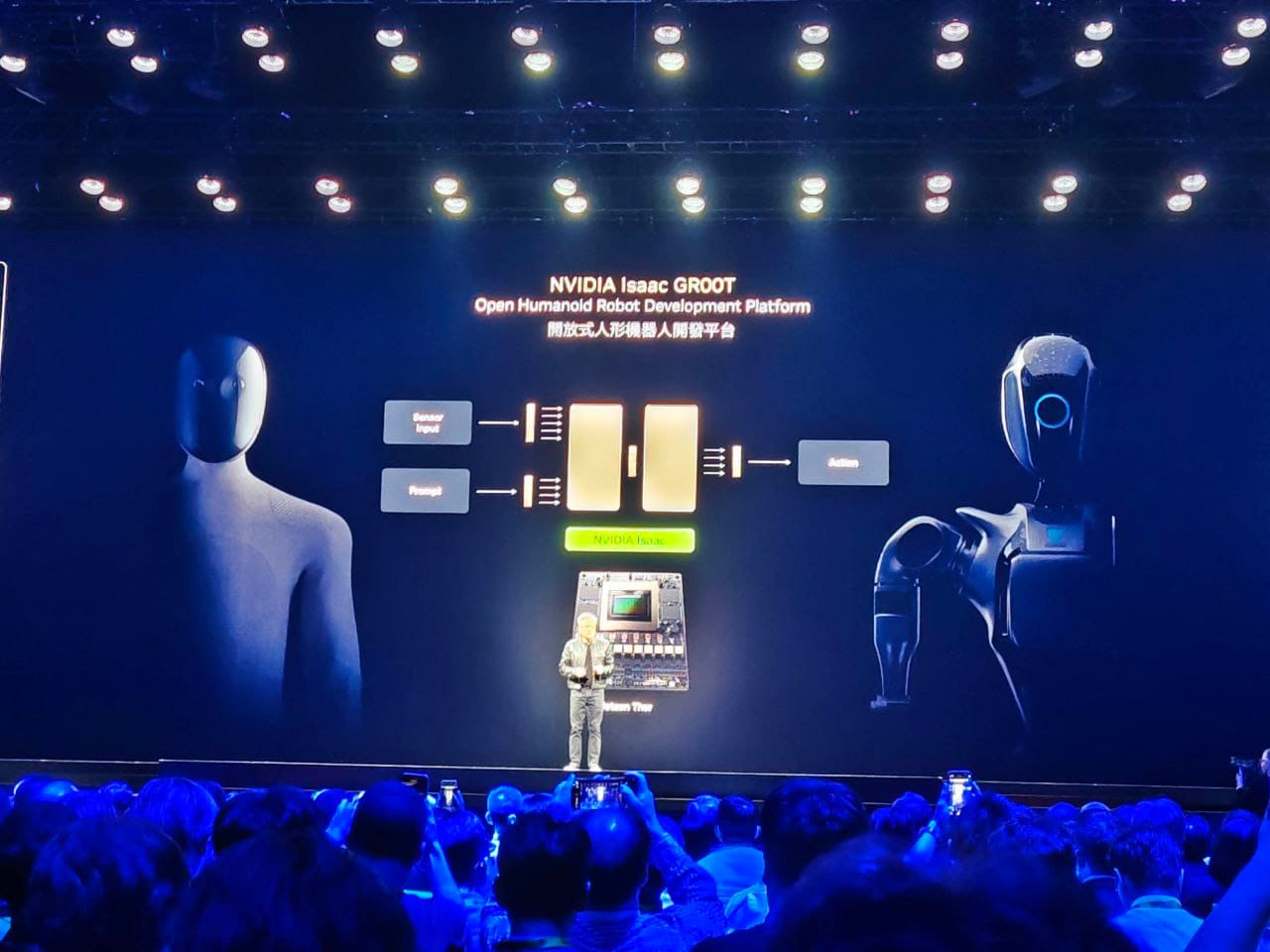
The latest version, Isaac 1.5, is now open source and provides everything roboticists need to develop, simulate, and deploy AI-based robotic systems.
Key capabilities include:
- Isaac Sim: A photorealistic, physically accurate simulation environment built on Omniverse
- Jetson Thor integration: NVIDIA’s new robotic processor with GPU acceleration
- Pre-trained models and motion libraries for perception, planning, and control
- Support for digital twin workflows, enabling synchronized development between virtual and physical systems
This platform enables startups, OEMs, and research institutions to iterate rapidly—designing, testing, and optimizing robots virtually before deployment.
Newton Engine: High-Fidelity Physics for Physical AI
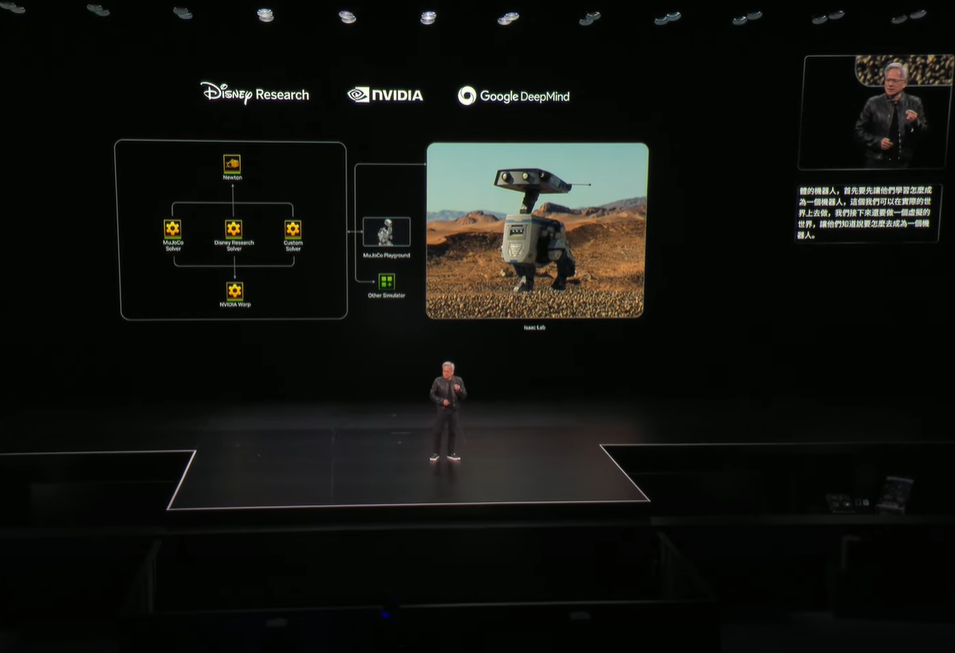
One of the highlights at COMPUTEX 2025 was NVIDIA’s unveiling of the Newton physics engine, built for simulating complex physical interactions with unprecedented fidelity.
What makes Newton different:
- Accurately models rigid and soft body dynamics, friction, contact, and deformation
- Fully GPU-accelerated, enabling real-time simulation at high resolution
- Differentiable—enabling learning through reinforcement techniques within simulation
- Developed in partnership with DeepMind and Disney Research
- To be open sourced in July, expanding access for the entire robotics community
Whether it’s a robot learning to walk, grasp, or navigate complex terrain, Newton provides the physical environment where training can happen safely and at scale—without relying on expensive hardware or risking system failure.
From Industrial Robots to Generalist Humanoids
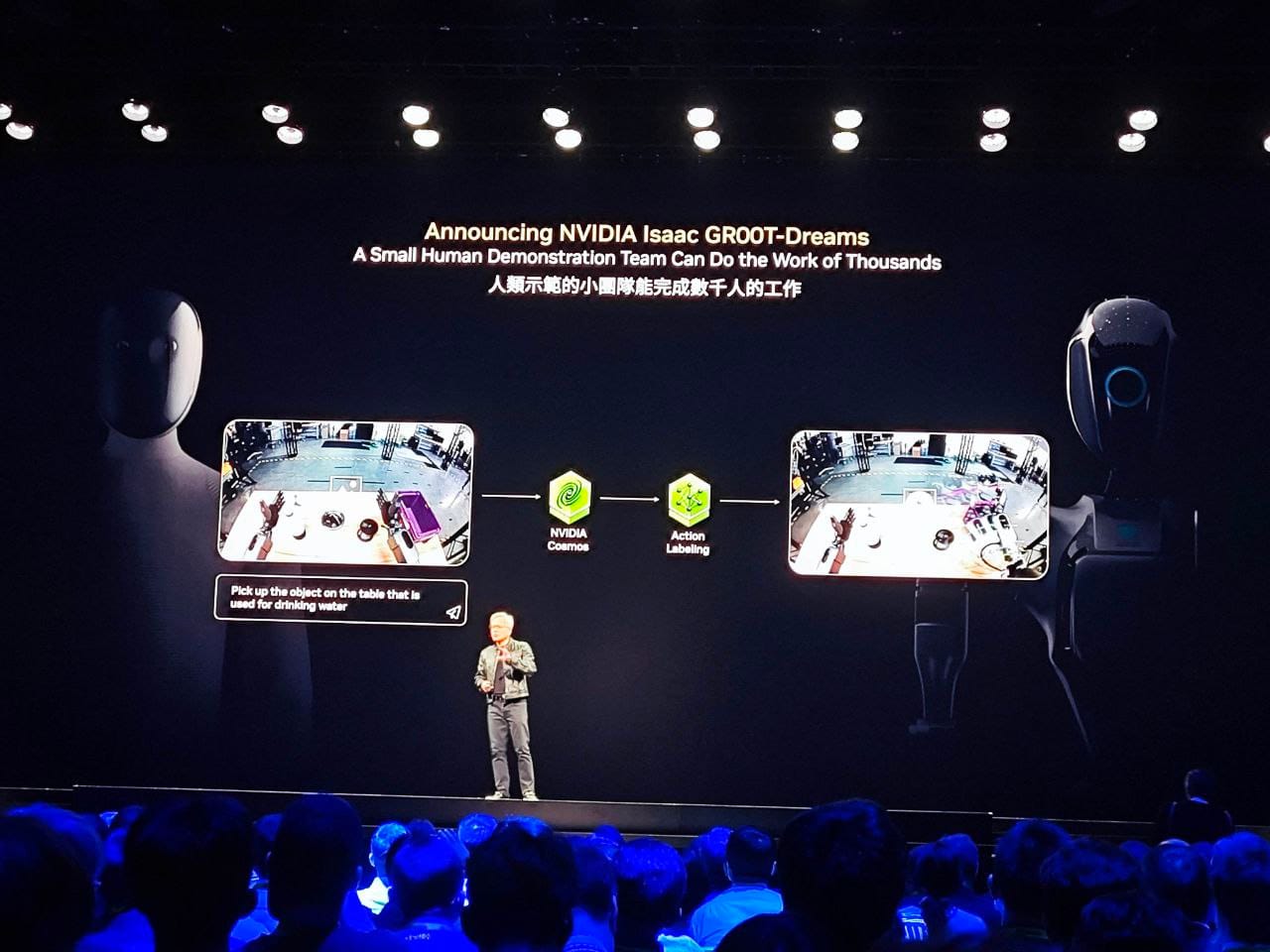
NVIDIA’s vision doesn’t stop at factory automation. At COMPUTEX, CEO Jensen Huang emphasized that the humanoid robot form factor is not only versatile, but likely to achieve the necessary scale for real-world adoption—thanks to reusable training infrastructure, modular simulation workflows, and shared physical learning models.
With tools like Cosmos and GROOT Dreams, NVIDIA is also tackling the robot data problem, using AI to amplify small sets of human teleoperation demos into thousands of synthetic training samples—further accelerating skill acquisition for robots.
Why This Matters to CTOs and System Architects
As labor shortages and supply chain complexities reshape global industries, robotics is quickly shifting from a niche investment to a core strategic enabler—in manufacturing, logistics, agriculture, healthcare, and beyond.
The challenge is not just hardware. It’s:
- Building versatile, reusable training environments
- Creating simulation-based feedback loops
- Deploying robotic intelligence safely, cost-effectively, and at scale
With the combination of Isaac, Newton, and Omniverse, NVIDIA is giving enterprises the tools to do just that—to simulate before they automate, and to iterate digitally before shipping physically.
Conclusion: From Agents to Embodied Intelligence
At COMPUTEX 2025, NVIDIA’s robotics roadmap became clearer: the future of AI isn’t just digital—it’s embodied.
Through open platforms, high-fidelity simulation, and massive GPU acceleration, NVIDIA is not just building better robots—it’s building the infrastructure to make robotics development faster, safer, and more accessible.
For CTOs planning the next stage of automation, simulation is no longer optional—it’s foundational.
